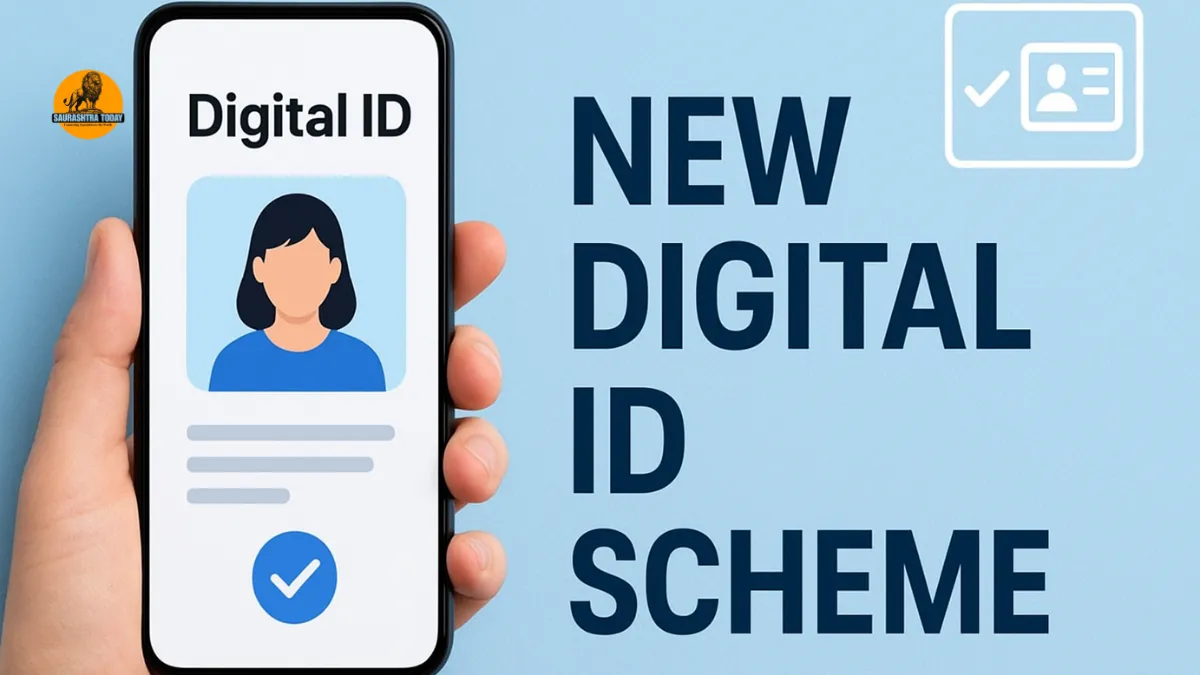The UK government is set to introduce a groundbreaking digital ID scheme aimed at transforming the way citizens and residents access government services while simultaneously cracking down on illegal working. The initiative, expected to be fully mandatory for Right to Work checks by the end of the current Parliament, promises to modernize identity verification and provide a seamless experience for millions of people across the country.
Digital ID Scheme: A New Era for Government Services
Under this new digital ID scheme, all UK citizens and legal residents will be able to verify their identities digitally, eliminating the cumbersome paper-based verification processes that have long slowed down access to vital services. Traditionally, applying for government benefits or verifying one’s identity required multiple forms of documentation, including utility bills, birth certificates, or passports. With the digital ID, individuals will be able to complete these processes quickly and securely using their smartphones, similar to how they currently use the NHS App or contactless mobile payments.
The government emphasizes that citizens will not be required to carry physical ID or produce it in person for most services. However, the digital ID scheme will be essential for proving the Right to Work, ensuring that illegal employment becomes increasingly difficult in the UK.
Tackling Illegal Working and Securing Borders
One of the central aims of the digital ID scheme is to curb illegal working. By making it mandatory to hold a digital ID for employment verification, the government seeks to stop individuals without legal residency status from accessing the UK labor market. This approach is intended to reduce one of the key “pull factors” for illegal migration: the ability to earn money in the country.
Prime Minister Keir Starmer addressed the nation, stating:
“I know working people are worried about the level of illegal migration into this country. A secure border and controlled migration are reasonable demands, and this government is listening and delivering.”
He further emphasized that the digital ID represents an enormous opportunity for the UK, both in securing borders and providing practical benefits for citizens. With this system, individuals can access key services without the hassle of locating old paperwork, streamlining interactions with government agencies and reducing opportunities for identity fraud.
Enhancing Services for Citizens
Beyond combating illegal work, the digital ID scheme will simplify access to essential government services. For example, residents will find it easier to apply for driving licenses, childcare, welfare, and access tax records digitally. By centralizing identity verification on a secure mobile platform, the government expects to save time and reduce administrative burdens on both citizens and public services.
The digital ID scheme will integrate with the ongoing rollout of the GOV.UK digital wallet and digital driving licenses, providing a unified digital identity experience for residents. By leveraging smartphones and secure authentication technology, the government aims to ensure that accessing services is straightforward and inclusive.
A Fair and Inclusive Approach
The UK government is committed to making the digital ID scheme accessible to all citizens, including those who are less familiar with technology. A public consultation will be launched to gather feedback on the implementation of the service, ensuring that vulnerable groups such as the elderly, homeless, and digitally inexperienced individuals are supported.
An outreach program will complement the rollout, offering face-to-face assistance for those who may struggle to access or navigate the digital platform. This inclusive approach is inspired by successful digital ID implementations in other countries, demonstrating the potential for technology to enhance social services without leaving anyone behind.
Learning from Global Success Stories
The UK’s digital ID scheme draws lessons from international examples where digital identity systems have significantly improved efficiency and security:
- Australia: Citizens use digital ID for private services, including banking and purchasing alcohol, reducing the need for multiple paper records.
- Estonia: Digital ID has streamlined access to child benefits, health records, and nursery applications, saving parents from repeatedly submitting the same information.
- Denmark: Students leverage digital ID to retrieve educational records and qualifications for university or job applications.
- India: The Aadhaar system has saved approximately $10 billion annually by preventing fraud and leakages in welfare programs.
By learning from these countries, the UK government aims to create a system that balances convenience, security, and privacy for all users.
Privacy and Security at the Core
Security is a cornerstone of the digital ID scheme. Digital credentials will be stored on individuals’ devices using state-of-the-art encryption and authentication technology, ensuring that personal data remains secure. If a device is lost or stolen, digital credentials can be immediately revoked and reissued, offering stronger protection than traditional physical documents.
The system will also limit the unnecessary sharing of personal information. Only the relevant details for a specific transaction or service will be disclosed, protecting user privacy while maintaining trust and accountability. Biometric security, including photos, will form the basis of authentication, similar to eVisas or passports.
Key Features of the UK Digital ID Scheme
| Feature | Description |
|---|---|
| Mandatory Use | Required for Right to Work checks |
| Platform | Smartphone-based digital credentials |
| Security | State-of-the-art encryption and biometric authentication |
| Privacy | Only essential information shared per service |
| Services | Driving licenses, childcare, welfare, tax records |
| Inclusivity | Designed to accommodate digitally inexperienced users |
| Global Inspiration | Lessons from Australia, Estonia, Denmark, India |
Combating Criminal Networks
In addition to individual benefits, the digital ID scheme will help tackle criminal organizations that exploit vulnerable individuals to profit from illegal crossings into the UK. By streamlining Right to Work checks, the government will crack down on forged documents and gather intelligence on businesses employing individuals illegally. This ensures that employers face accountability while deterring exploitation in the labor market.
Also read: World Pharmacist Day: Importance, Theme, and Role of Pharmacists in Healthcare
Looking Ahead: Consultation and Implementation
The government has committed to consulting the public on the rollout of the digital ID scheme, ensuring that the system meets the needs of all citizens. Feedback from groups less familiar with digital technology will guide the development of the service, ensuring accessibility and usability for everyone.
The rollout will include educational initiatives, outreach programs, and on-the-ground support to make the transition to a digital identity seamless. By learning from successful systems abroad and implementing a secure, inclusive platform, the UK aims to set a global benchmark in digital identity.
Conclusion
The new digital ID scheme marks a major step forward in modernizing government services in the UK. By providing secure, convenient, and inclusive digital identification, the government aims to improve citizens’ access to essential services while curbing illegal working and strengthening border security.
From facilitating easier access to childcare and welfare programs to ensuring robust verification for employment, the digital ID scheme is poised to transform the way residents interact with government systems. With privacy, security, and inclusivity at its core, this initiative reflects the UK government’s commitment to leveraging technology for public benefit.
As the public consultation progresses and the rollout begins, the digital ID scheme promises to create a fairer, more efficient, and secure environment for both citizens and the government, shaping the future of digital identification in the UK.
















